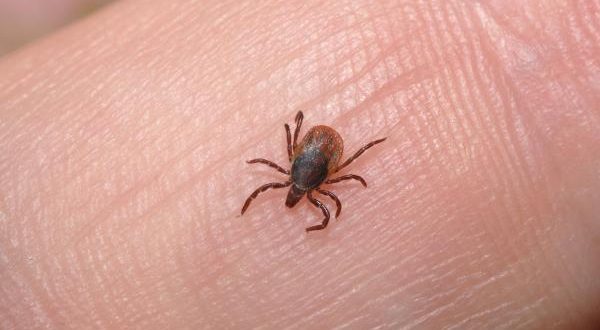HENDRICKS COUNTY – Tick season has begun in certain areas of the United States. Hendricks County health officials urge citizens to educate themselves on how to prevent tick-bites this spring and summer.
“Ticks are known to transmit several diseases to both humans and pets when bites occur,” reports Krista Click, Director of Environment Health at the Hendricks County Health Department (HCHD). “As warm weather sets in, our exposure to tick activity will increase.”
According to the Center for Disease Control and Prevention (CDC), ticks can carry diseases such as Lyme disease, Rocky Mountain Spotted Fever, Anaplasmosis, Babesiosis, Tularemia, and others. The most recent CDC data available (20002016) reports 14 confirmed cases of Lyme disease in Hendricks County. However, many tick-carried diseases go undiagnosed, so estimates could be much higher.
The CDC reports that the types of ticks most commonly found in the Hendricks County area are American Dog Ticks, Brown Dog Ticks, Blacklegged Ticks, and Lone Star Ticks. The CDC website (https://www.cdc.gov/ticks/) provides an easy-to-use tick identification tool including photos of each tick type. According to the Indiana State Department of Health, adult ticks generally prefer, “grassy, bushy, or woody areas,” where they can come in contact with a mammal (human, deer, dog, etc.) for their next blood meal (https://www.in.gov/isdh/20491.htm).
“The best way to avoid suffering from tick-carried infections is by preventing tick bites in the first place,” advises Click. Some of the easiest ways to prevent a bite are by wearing close-toed shoes, socks, long pants and sleeves, hats, tucking pant legs into socks, and tucking your shirt into your pants. Other personal precautions include using bug-spray with at least 20-30% DEET, picaridin, or IR3535, and treating your clothes or camping items with Permethrin.
Keeping your yard well-trimmed, avoiding contact with trees and brush, treating your pets with tick-killing preventatives, and washing/drying your clothes in high heat after being outdoors are also highly recommended by the CDC.
“If you do get bitten by a tick, it is best to avoid using common folklore methods of removing it such as heat or nail polish,” states Dr. David Stopperich, Health Officer for the HCHD. “Instead, use blunt tweezers to carefully pull the tick out near the skin, avoiding crushing the tick. Common symptoms of tick-carried diseases include rash, fevers, headaches, pains, and diarrhea,” reports Dr. Stopperich. “If you have suffered any of these symptoms recently, it is important that you visit a doctor right away.”
For more information about tick prevention, visit the CDC’s Ticks webpage at www.cdc.gov/ticks/ or contact the Hendricks County Health Department Environmental Health Division at (317) 745-9217.






